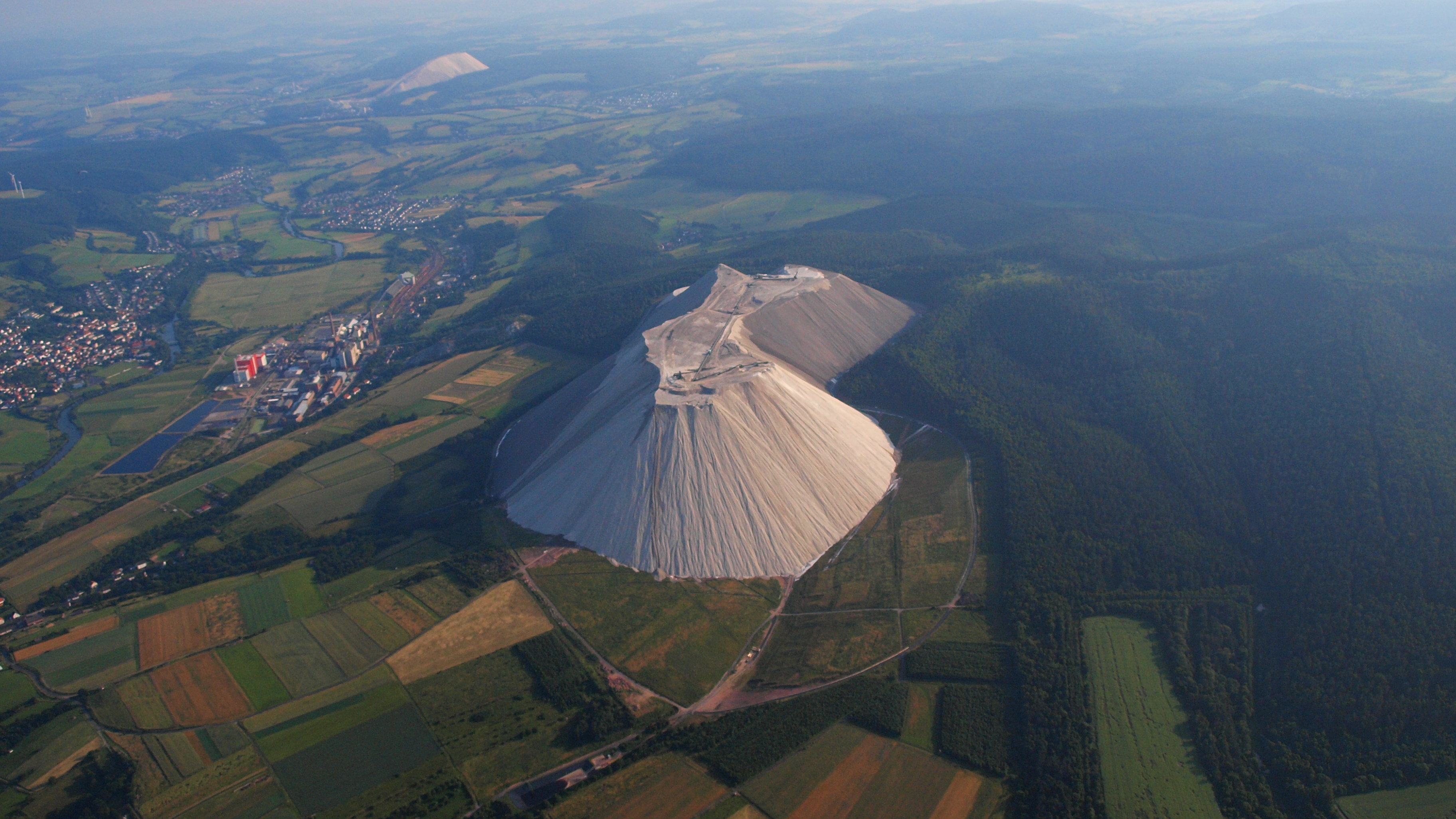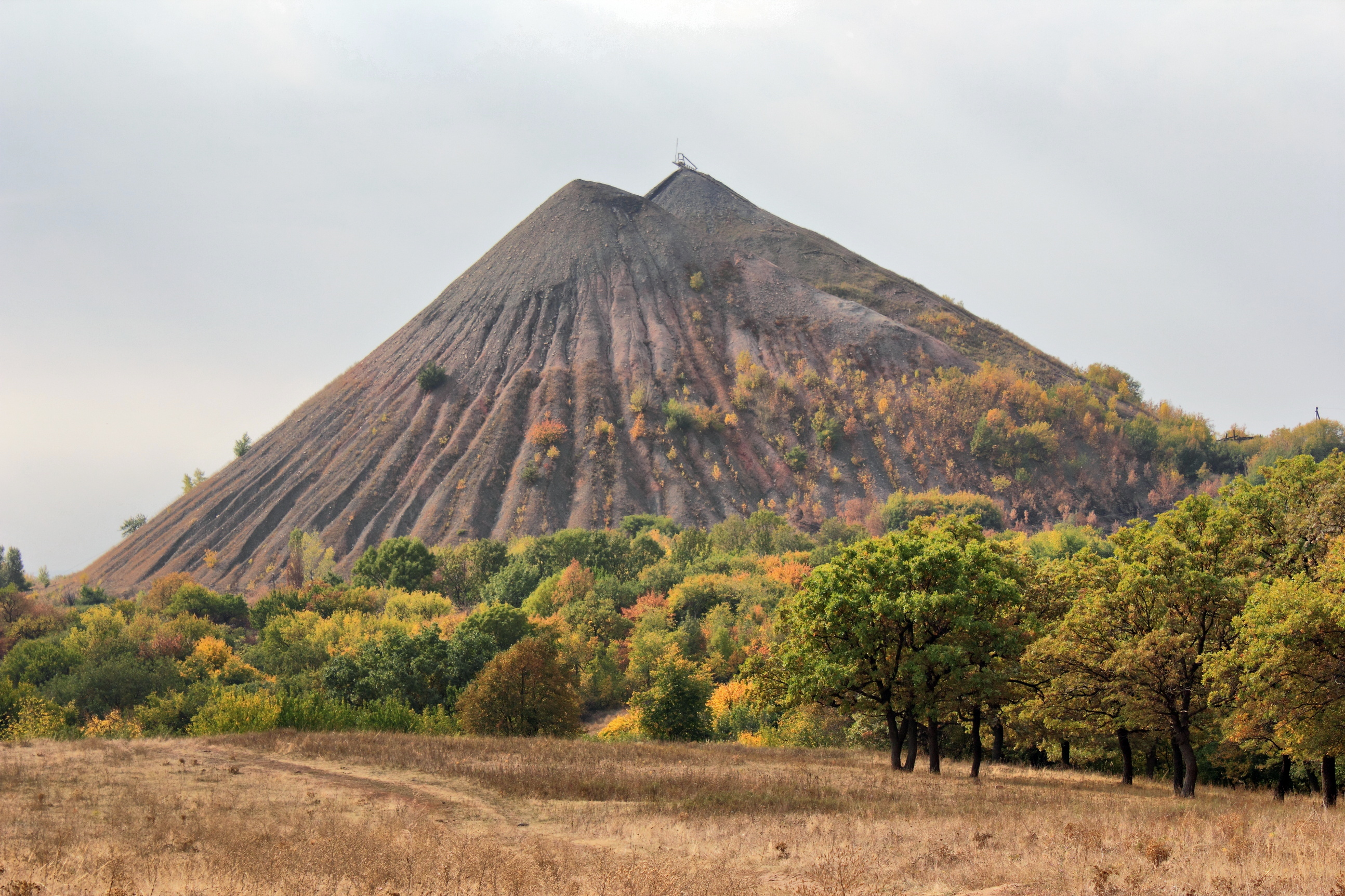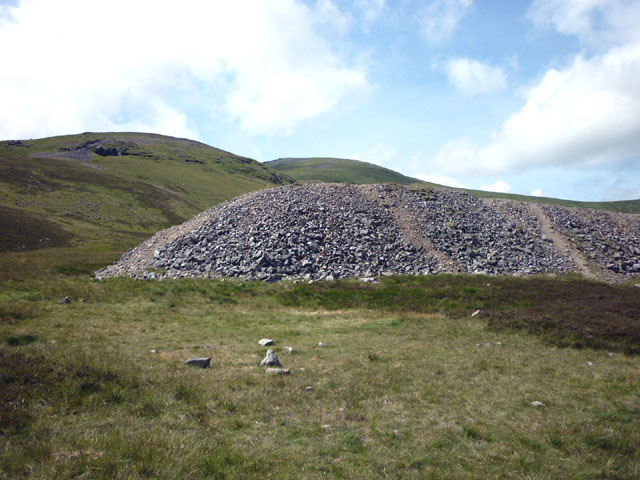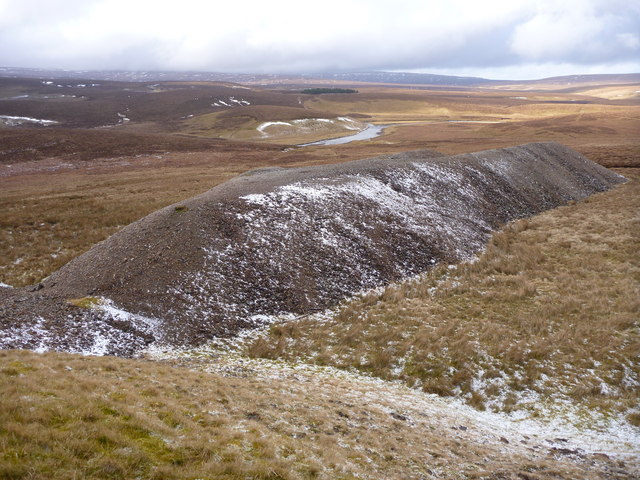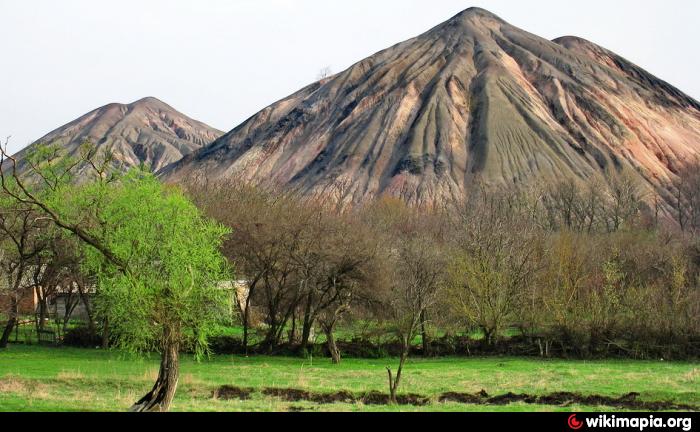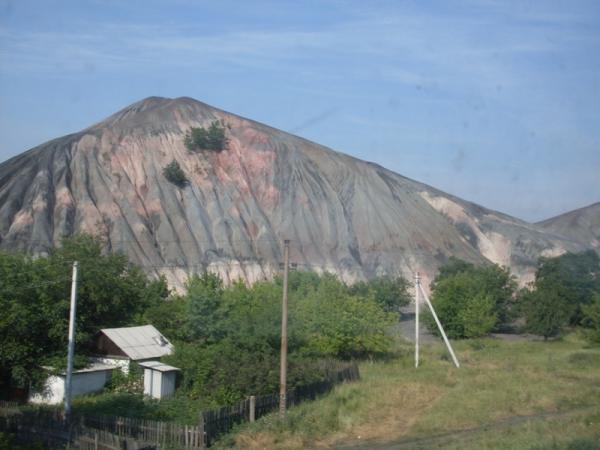Spoil tip
Heaps are heaps from mining, especially from the coal industry. These man-made inland mountains are visible from afar the landscape in the coal mining areas, especially in the Ruhr area, in the Aachen area and the Saar area. The word part "Mountains " here is not to be understood as a plural of Berg in the topographical sense, but is the miner's term for " waste rock ".
General
The degradation of coal falls inevitable deaf, ie not leading to coal -rock. In the past they tried to stay out of these so-called mountains locally as possible from the support; so the mountains proportion of production remained low. However, due to the mechanization of the coal mining mountains of attack increased dramatically. The shift of the degradation in depths of up to 1500 m increased the mountains attack further, as greater distance cross sections with more broken rock are required to master the mountain pressure. He finally reached in the 1980s to a peak of 47-48 % of the total funding and remained approximately constant until today. Stable has for years been the division in the use of the tailings: 4% be installed as an offset underground again. 24% can be used as a second paragraph, in particular as building materials. The remaining 72 % are useless and are stockpiled. Over the history of mining have emerged in this way in the Ruhr, for example, around 170 dumps as artificial hills and mountains of sometimes more than 100 m, many of which were but removed again due to their improper packing and design. The late 1990s, 19 large heaps were operated by the Ruhr coal AG.
Formation of slag heaps
In the early days of the coal industry the resulting tailings was placed as inconspicuously as possible in the surrounding area. Typical of this period are slope embankment slopes, the resulting arisen that the tailings was overthrown on a slope. These small heaps are now so well integrated into the landscape that they are difficult to detect.
Heap types
The increasing amount of tailings made it necessary aufzuschütten much on a small area as possible. By transporting via conveyor belts called pointed cones Halden emerged. This first generation of heaps consisted usually of several overlapping cones with an average of 19 m height. Due to their loose packing and the associated unhindered oxygen transfer these dumps tended to self-ignition. At many sites, there was thereby stockpile fires that could be deleted only with great effort after several months. Although found the burnt-out, red discolored tailings as a building material use, but it was the environmental hazards caused by waste dump fires so large that by the end of the 1960s, pointed cone Halden in the Ruhr area were almost completely removed.
Example of a tailings dam in the Ruhr region: map and elevation profile of the Schurenbachhalde in Essen.
Dump problem
The problems with smoke development, stability and difficulties in the greening of pointed cone Halden led to a new generation of dump bodies: terraced mesas with strict lines and hard contours. The bed height was usually about "double tree height", ie about 40 m; however, it was clearly exceeded in some cases. In this form of burning heaps are known.
Protests from the local people and communities against these on the drawing board, designed, hard - konturigen structures that constitute disruptive elements in the landscape, led to the guidelines of the design of tailings heaps in the 1980s were changed. They determined that heaps are in the future to create a landscape structures that take into account all spatial structural, ecological, landscape design and safety requirements holistically. This third generation of heaps is characterized by a footprint of more than 100 hectares and a height of 50-100 meters. Many of these dumps are accessible to tourists.

